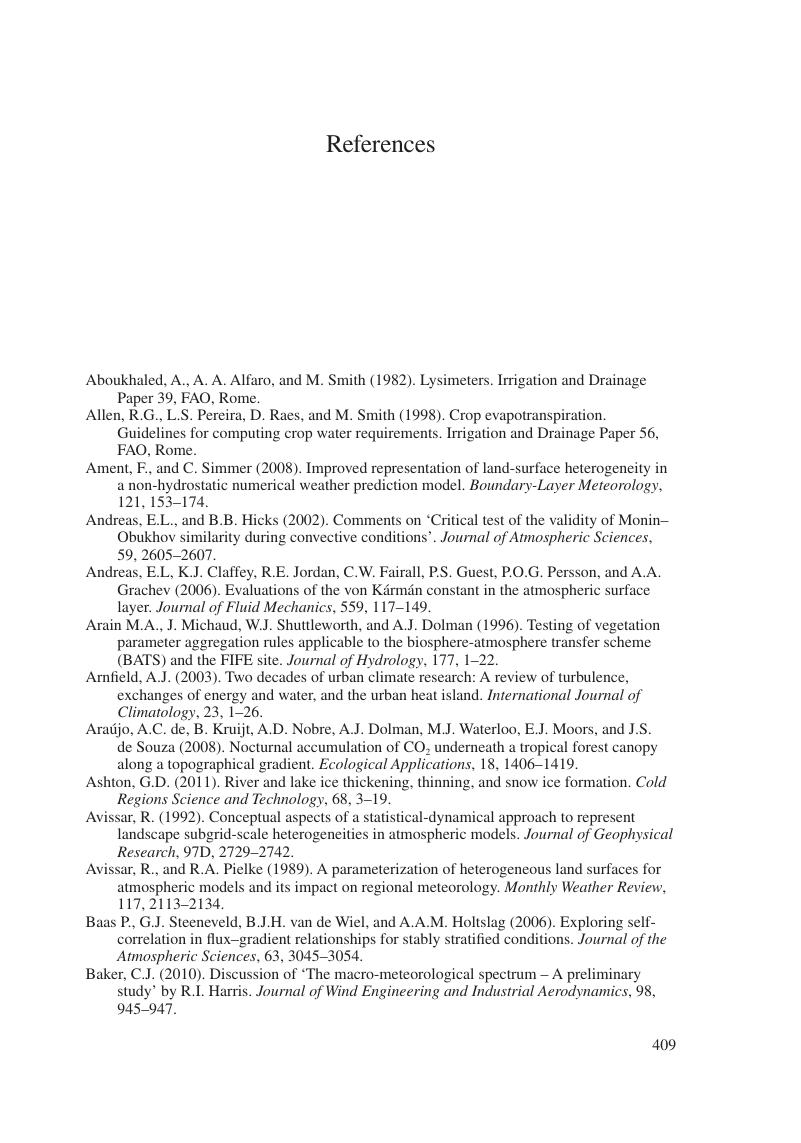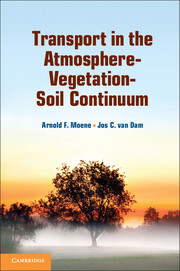Book contents
- Frontmatter
- Contents
- Preface
- 1 The Atmosphere-Vegetation-Soil System
- 2 Available Energy: Net Radiation and Soil Heat Flux
- 3 Turbulent Transport in the Atmospheric Surface Layer
- 4 Soil Water Flow
- 5 Solute Transport in Soil
- 6 Vegetation: Transport Processes Inside and Outside of Plants
- 7 Combination Methods for Turbulent Fluxes
- 8 Integrated Applications
- 9 Integrated Models in Hydrology and Meteorology
- Appendix A Radiation
- Appendix B Thermodynamics and Water Vapour
- Appendix C Dimensional Analysis
- Appendix D Microscopic Root Water Uptake
- Appendix E Crop Factors for Use with Makkink Reference Evapotranspiration
- Answers
- List of Main Symbols
- References
- Index
- References
References
Published online by Cambridge University Press: 05 June 2014
- Frontmatter
- Contents
- Preface
- 1 The Atmosphere-Vegetation-Soil System
- 2 Available Energy: Net Radiation and Soil Heat Flux
- 3 Turbulent Transport in the Atmospheric Surface Layer
- 4 Soil Water Flow
- 5 Solute Transport in Soil
- 6 Vegetation: Transport Processes Inside and Outside of Plants
- 7 Combination Methods for Turbulent Fluxes
- 8 Integrated Applications
- 9 Integrated Models in Hydrology and Meteorology
- Appendix A Radiation
- Appendix B Thermodynamics and Water Vapour
- Appendix C Dimensional Analysis
- Appendix D Microscopic Root Water Uptake
- Appendix E Crop Factors for Use with Makkink Reference Evapotranspiration
- Answers
- List of Main Symbols
- References
- Index
- References
Summary

- Type
- Chapter
- Information
- Transport in the Atmosphere-Vegetation-Soil Continuum , pp. 409 - 430Publisher: Cambridge University PressPrint publication year: 2014



